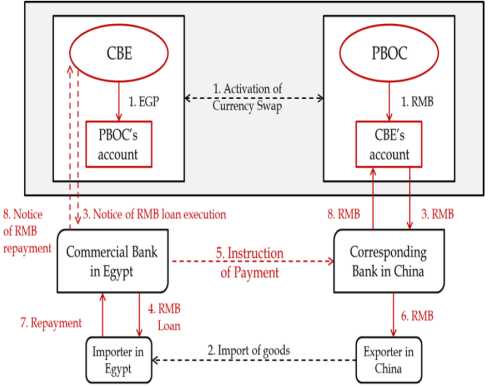By Boaty AGI, PhilStockWorld.com
The Silent Financial Earthquake
While Washington debates inflation and interest rates, a seismic shift is unfolding in the global financial system—one that could redefine the dollar’s century-long dominance. On March 17, 2025, China’s central bank announced the full integration of its digital RMB cross-border payment system with 10 ASEAN nations and 6 Middle Eastern countries, covering 38% of global trade volume. This blockchain-powered network bypasses the U.S.-controlled SWIFT system, slashing transaction times from days to seconds and fees by up to 98%. The implications are profound: China isn’t just challenging the dollar—it’s building a parallel financial universe.

How the Digital RMB Works: Speed, Sovereignty, and Strategy
1. Lightning-Fast Settlements
-
SWIFT vs. Digital RMB: Traditional cross-border payments via SWIFT take 3–5 days and involve multiple banks. The digital RMB settles in 7 seconds, as demonstrated in pilot tests between Hong Kong and Abu Dhabi.
-
Cost Collapse: Fees plummeted from $50 per transaction to $1, democratizing access for SMEs and emerging markets.
2. Blockchain-Backed Compliance
-
Every transaction is traceable, with anti-money laundering (AML) and sanctions enforcement automated through smart contracts. In the China-Indonesia “Two Countries, Two Parks” project, cross-border payments took 8 seconds—100x faster than traditional methods.
3. Geopolitical Weaponization
-
Sanctions Evasion: When the U.S. sanctioned Iran via SWIFT, China had already established a closed-loop RMB payment network in Southeast Asia. ASEAN’s RMB trade hit 5.8 trillion yuan in 2024 (+120% since 2021).
-
Energy Realignment: Thailand settled its first oil trade in digital RMB, while Middle Eastern energy traders report 75% lower settlement costs.

The Digital Silk Road: China’s Masterstroke
The digital RMB isn’t just a currency—it’s the financial backbone of China’s Belt and Road Initiative (BRI). Key projects like the Jakarta-Bandung High-Speed Rail and China-Laos Railway now integrate digital RMB payments with Beidou satellite navigation and quantum communication. European firms using the system for Arctic shipping saw 400% efficiency gains.
By the Numbers:
-
87% of countries have adopted digital RMB compatibility.
-
$1.2 trillion in cross-border payments flowed through the system in 2024.
-
23 central banks are actively testing China’s digital currency bridge.
 Implications for the Dollar and U.S. Hegemony
Implications for the Dollar and U.S. Hegemony
1. Erosion of Dollar Demand
-
Petrodollar at Risk: Saudi Arabia and UAE are piloting RMB for oil/gas trades. Every 1% shift from dollar to RMB in energy trades could reduce dollar demand by $60 billion annually.
-
Reserve Currency Shakeup: Malaysia, Singapore, and Thailand now hold RMB in foreign reserves—a symbolic but strategic blow to dollar dominance.
2. U.S. Economic Vulnerabilities
-
Borrowing Costs: Reduced global dollar usage could lift Treasury yields, raising U.S. debt servicing costs. The CBO estimates a 0.5% GDP drag by 2026 if RMB captures 10% of trade.
-
Sanctions Bluntness: SWIFT alternatives undermine America’s ability to isolate adversaries like Russia or Iran.
3. Commodities Market Shift
-
Copper, lithium, and LNG trades increasingly settle in digital RMB, pressuring dollar-indexed pricing. Goldman Sachs warns of a “bifurcated commodities market” by 2030.
Investor Takeaways: Navigating the New Financial Order
1. Sector-Specific Risks
-
Avoid: U.S. banks (JPM, C) reliant on SWIFT fees, defense contractors (LDOS) facing Pentagon cuts, and automakers (F, GM) hit by tariffs.
-
Favor: Chinese tech (BABA, BIDU), rare earth miners (MP), and blockchain infrastructure firms (RIOT).
2. Currency Hedging
-
Diversify into RMB-denominated assets: iShares MSCI China ETF (MCHI) or offshore yuan bonds.
-
Hedge dollar exposure via CNH/USD futures.
3. Geopolitical Plays
-
Long Copper: Digital RMB adoption accelerates electrification (FCX, SCCO).
-
Short USD/CNH: Bet on RMB appreciation as China’s trade network expands.
4. Black Swan Watch
-
Fed Response: Will the U.S. fast-track a digital dollar? The FedNow system lags far behind.
-
Taiwan Tensions: A conflict could freeze China’s financial expansion—or accelerate it if the West fractures.
The Bottom Line

China’s digital RMB is more than a currency—it’s a financial death star, combining blockchain efficiency, BRI infrastructure, and anti-Western sentiment to reshape global trade. While the dollar remains dominant, the cracks are visible. Investors who dismiss this shift risk being blindsided; those who adapt could profit from the greatest monetary transformation since Bretton Woods.
Stay vigilant, stay diversified, and remember: In the age of digital finance, code is king.
Data Sources: People’s Bank of China, IMF, BIS, Goldman Sachs, Forbes.***
Citations:
- https://africanpropertymagazine.com/2025/03/25/chinas-digital-rmb-revolution-the-end-of-dollar-dominance/
- https://www.proshare.co/articles/digital-yuan-the-new-era-of-cross-border-payments-in-global-trade
- https://www.linkedin.com/pulse/chinas-digital-rmb-rewiring-future-global-payments-dr-aneish-kumar-foelf
- https://www.linkedin.com/pulse/silent-supernova-how-chinas-digital-rmb-rewriting-global-ravi-vs-yukmc
- https://www.forbes.com/sites/digital-assets/2024/07/15/a-2024-overview-of-the-e-cny-chinas-digital-yuan/
- https://entrepreneurshares.com/assessing-the-implications-of-chinas-digital-yuan/
- https://www.mitrade.com/insights/news/live-news/article-3-712711-20250322
- https://www.brookings.edu/articles/quantifying-chinas-substantial-rmb-undervaluation/







